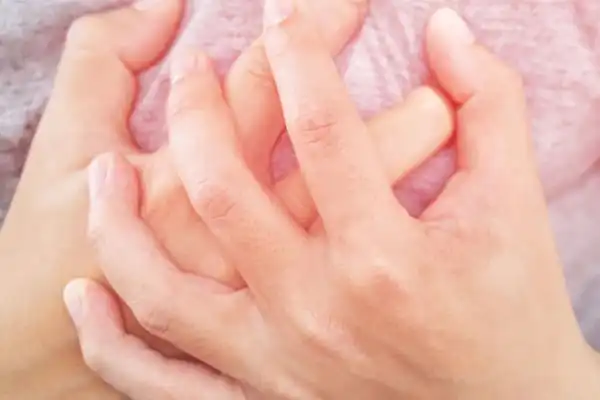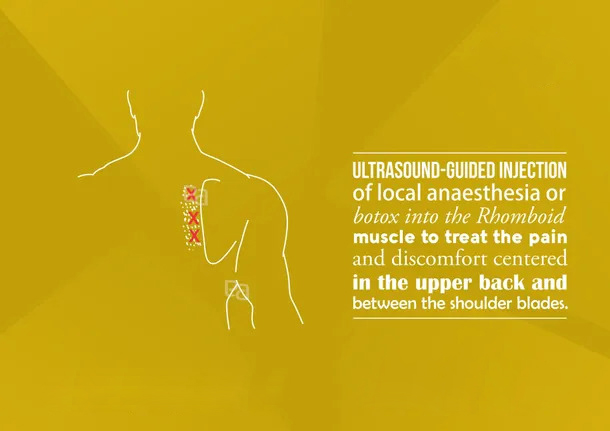

Treatments
CHEST WALL PAIN

Rhomboid Muscle Injection
Why do I need a rhomboid muscle injection?
Rhomboid muscle is present in the upper back region just beneath the neck and between the upper shoulder blades. They attach the edges of your shoulder blades to your spine. Rhomboid muscle helps in controlling the arms and shoulders.
Pain in the rhomboid muscle can be caused by spasm, sprain or strain. The pain of a rhomboid muscle will be centred in your upper back, between your shoulder blades or in the neck. The pain may increase when you move or breathe.
How is a rhomboid muscle injection performed and what are the complications?
Rhomboid muscle injection is done under ultrasound guidance on a day surgery basis. In the procedure room you will be asked to lie on your tummy and muscle is identified using an ultrasound, most painful spot is identified and injection is performed with a fine needle. These trigger point injections should be followed by daily stretching exercises to get a long-term benefit.
Injection site pain/soreness is the most common complication, which is self-limiting. Other complications like bleeding and infection are very rare. Please read our FAQ section to know more about the do's and don'ts prior to and after the procedure.
If you suffer with Trigeminal Neuralgia and if you are not fit for a brain surgery or not willing for one, there are other percutaneous procedures (done with an injection) for relieving your pain. Radiofrequency ablation of the trigeminal ganglion is a commonly done procedure for trigeminal neuralgia. At Atlas Pain Care, a thin radiofrequency needle is inserted into your cheek, and guided by X-ray or CT-scan until it is passed through a small hole in the base of the skull to reach the trigeminal ganglion. After identifying the affected nerve with tiny electric currents, it is stunned at temperatures of 70-80 degree Celsius under mild sedation. This procedure normally gives pain relief lasting upto 3-5 years. If the pain comes back, the procedure could be repeated.

